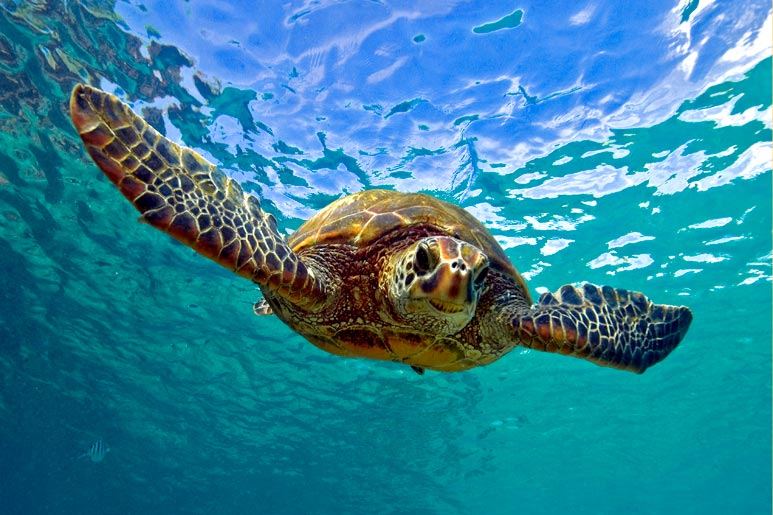Tortoise, Terrapin or Turtle?
Unfamiliar with the Chelonians (a category of reptiles with shell), many of us stumble to tell the differences among the tortoise, terrapin and the turtle.
|
Tortoise
|
Terrapin
|
Turtle
|
|
| Natural Habitat | Primarily live on dry land, and are commonly found in hot, dry climates | Commonly encountered in stagnant fresh water like ponds and streams | Spend most of their lives at sea (saltwater), only returning to land to lay eggs. |
| Features | Tend to have the most “domed” shells among the three as they do not need to worry about the swimming aspect
Limbs consist of sturdy, stubby legs to help them move about on land |
More streamlined and generally have much flatter shells to reduce drag while swimming
Limbs consist something akin to flippers which allows them to swim efficiently |
Flat shells to aid with swimming
Legs are stubby with claws that make they good climbers |
| Diet | Most species are vegetarian while some may take a small amount of meat in their diet | Has an omnivorous diet, clawing madly at the food item to break into small | Has a varied omnivorous diet – sea weed, aquatic algae, jellyfish, etc |
The Commonly-kept Pet
Snapping, biting, shy and.. a bit smelly. TERRAPINS make excellent ‘starter’ pets as they are relatively low maintenance. They are small and do not need a lot of space and the best part, you don’t need to train them! But it would definitely work well in your favour if you check on the breed to research on its lifestyle and the maximum size before purchasing one. You wouldn’t want to realise one day, that your terrapin has taken up more space than you had originally planned to give, would you? In its lifespan of 10 to 20 years, some terrapins may only grow up to four inches in length whereas, others may reach an astonishing two feet!
DIETARY NEEDS
When it comes down to keeping a terrapin in captivity fit and healthy, it really depends on their diet. Variety is key simply because a range of food items means greater diversity of vitamins and minerals for your pet.
Besides the commercial tub of terrapin food, fruits and vegetables, finely chopped or grated, would be appreciated. To satisfy the carnivorous side of their diet, you can also give them raw meat like chicken, pork and beef. And, seafood like prawn and fish. You can also hand feed live invertebrates like mealworms or crickets. But be very careful – some terrapins are capable of biting off a finger.
LIVING SPACE
The terrapinarium is their home. It should be a clear glass or plastic tank designed to hold water. A water filter should be fitted as terrapins notoriously known to be messy. Water should be replaced regularly with any solid waste removed frequently to prevent infection and odour. A flat stone or rock that stands out of the water should also be provided so that your terrapin has an area in which to bask in the sunlight or rest. (Terrapins dislike cold water!)
Remember, taking home a pet is easy. Taking care of them for their entire lifetime is an arduous journey. Are you willing to stay committed?



